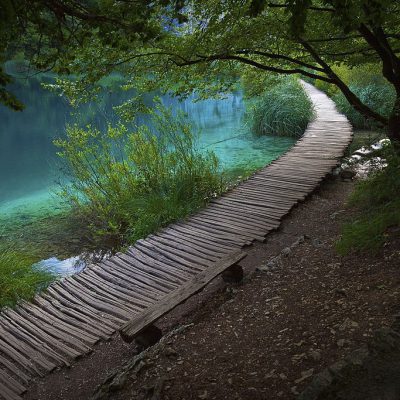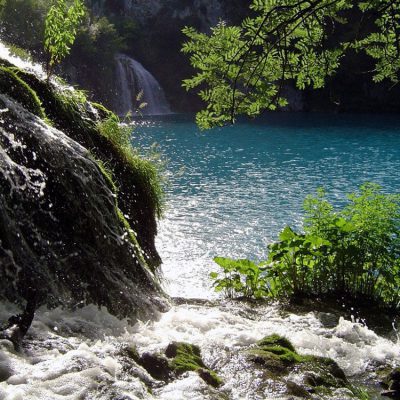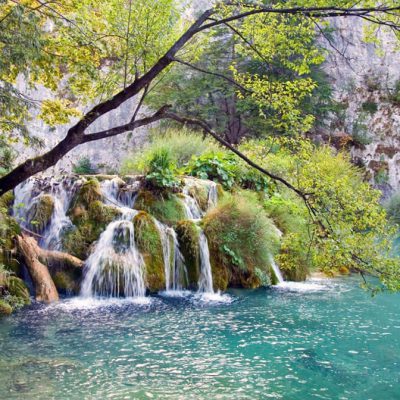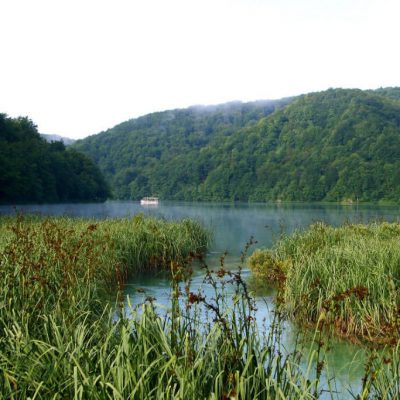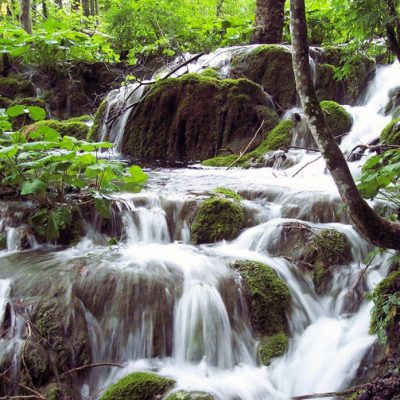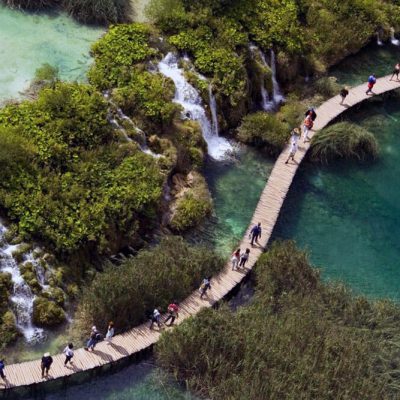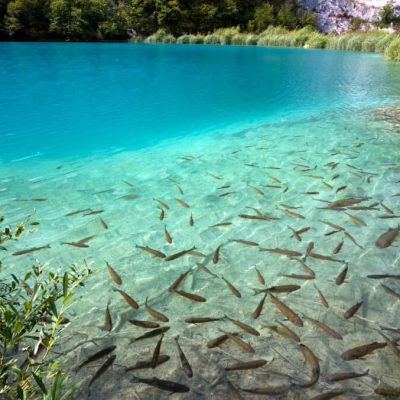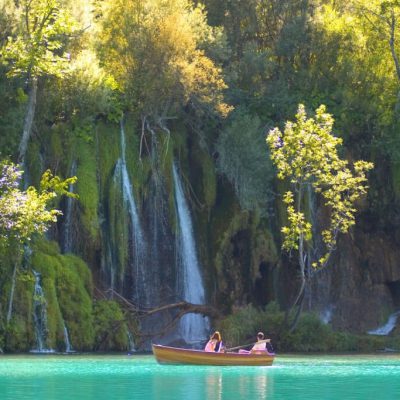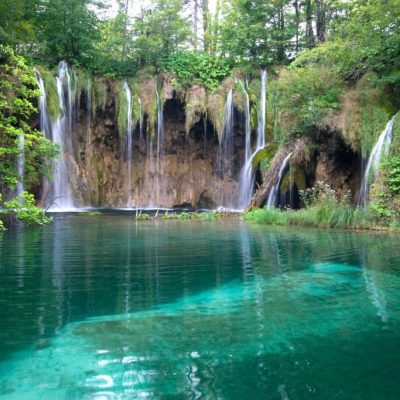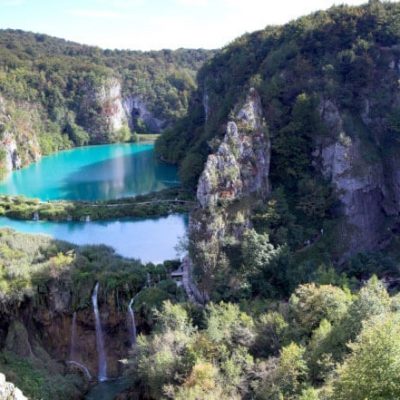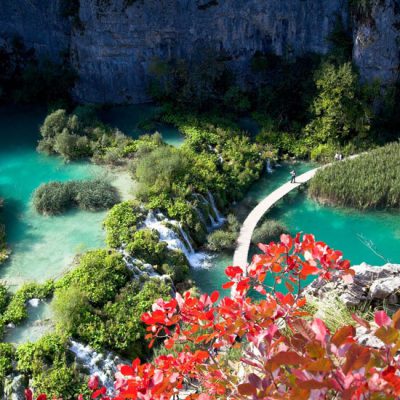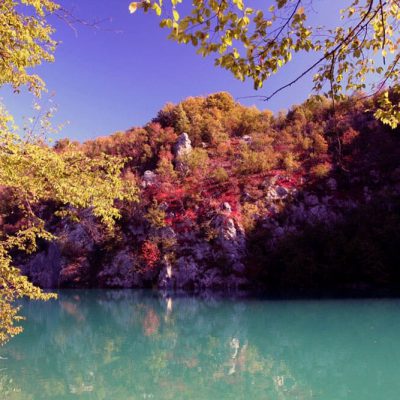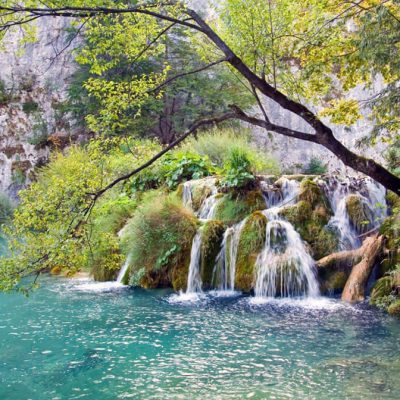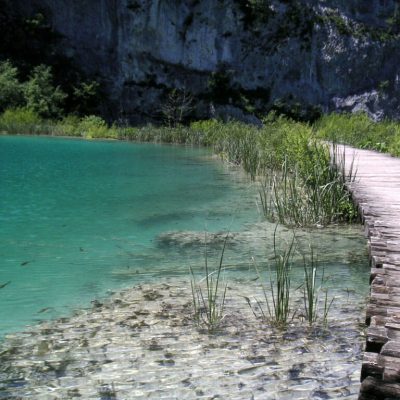Plitvice Lakes National Park is Croatia’s most visited natural wonder and its oldest national park (since 1949). Its majestic waterfalls, lakes, and forests have earned it a place on the UNESCO register ofworld natural heritage sites and made it Croatia’s second biggest tourist attraction after the Adriatic coast and islands.
About
Plitvice Lakes National Park is Croatia’s most visited natural wonder and its oldest national park (since 1949). Its majestic waterfalls, lakes, and forests have earned it a place on the UNESCO register ofworld natural heritage sites and made it Croatia’s second biggest tourist attraction after the Adriatic coast and islands.
The park’s most compelling features are the waterfalls that connect its 16 turquoise lakes, which are set in dense forests of beech, fir, spruce, and soaring rock formations. The water is crystal-clear thanks to deposits of travertine (powdery white limestone rock) under the water.
Note that swimming is forbidden, as is walking on the travertine.
The park is also rich with caves, springs, flowering meadows, the source of the River Korana (a gorge that looks like a green branch of the Grand Canyon), and several animal species including deer, wolves, wild boar, and the increasingly rare brown bear.
Traffic
Plitvice is on the old road (E71) between Split and Zagreb, but you don’t need a car to get there from anywhere in Croatia because almost every town and every hotel in the country either offers guided tours or connects visitors with travel agencies that include Plitvice or focus on it.
The trip from Zagreb to Plitvice by car takes about two hours.
Visit
Prošćansko Lake is located at an altitude of 636m, and has a depth of up to 37m. The vastness of the lake gives the water a dark green colour.
Ciganovac Lake was named after the legend that says a Roma (“cigan”) drowned in the lake while fishing. The most interesting detail are the falls where Prošćansko Lake pours into Ciganovac Lake, where the rocks in the middle of the falls have caved in.
Okrugljak Lake got its name because of its circular shape (“krug” means “circle” in Croatian). The lake is located at an altitude of 613m. Swan Falls are located at this lake, under which there are many caves and coves.
Kozjak Lake was named after the legend according to which 30 goats (“koza” means “goat” in Croatian) drowned while crossing over from the shore to the islet in an attempt to run away from wolves.
Gavanovac Lake was named after the legend that Gavan’s treasure was lost at the bottom of the lake.
Recreation
Plitvice are perfect for hiking, but you can also explore the flora and fauna by walking along the designated trails, or go sightseeing around the park on a panoramic boat.
Gastro
Local cuisine consists of drinks, such as Slivovitz (Croatian šljivovica), wine and coffee, and dishes such as soft cheese (Croatian vrhnje), polenta, pršut, sausages, (as for example the paprika sausage), roasted suckling pig (Croatian: odojak) or lamb (Croatian: janjetina).



